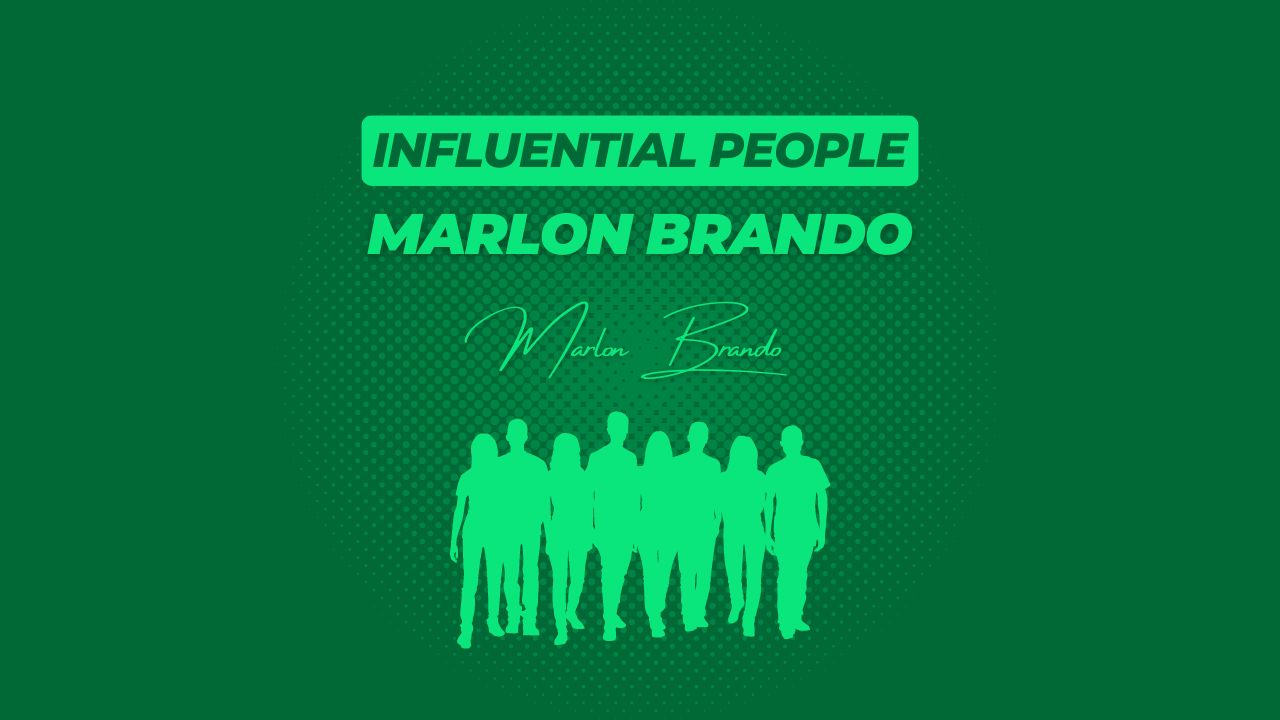Marlon Brando remains one of the most significant figures in the pantheon of great actors, his legacy marked by a transformative influence on both the craft of acting and the broader cultural landscape. Emerging in the early 1950s as a force of nature with his revolutionary approach to method acting, Brando challenged and reshaped the norms of cinematic performance. His unforgettable roles in films such as “A Streetcar Named Desire” and “On the Waterfront” not only earned him critical acclaim but also established him as a cultural icon whose impact transcended the silver screen. Brando’s ability to convey complex emotions with subtlety and intensity redefined the archetypes of masculinity and vulnerability in Hollywood, making him a perennial figure in discussions about film and an enduring symbol in pop culture. His legacy continues to influence new generations of actors and filmmakers, attesting to his timeless relevance and appeal.
approach to method acting, Brando challenged and reshaped the norms of cinematic performance. His unforgettable roles in films such as “A Streetcar Named Desire” and “On the Waterfront” not only earned him critical acclaim but also established him as a cultural icon whose impact transcended the silver screen. Brando’s ability to convey complex emotions with subtlety and intensity redefined the archetypes of masculinity and vulnerability in Hollywood, making him a perennial figure in discussions about film and an enduring symbol in pop culture. His legacy continues to influence new generations of actors and filmmakers, attesting to his timeless relevance and appeal.
Early Life and Career Beginnings
Marlon Brando’s early life and formative years set a compelling backdrop to his illustrious career. Born on April 3, 1924, in Omaha, Nebraska, Brando was raised in a family with a penchant for drama; his mother was an actress and his father a hard-nosed salesman. This combination of sensitivity and toughness would later define his acting style. Brando’s exposure to the theatre through his mother’s involvement ignited his interest in acting, which was further nurtured during his studies at the Dramatic Workshop of the New School in New York City under the legendary teacher Stella Adler. Adler introduced him to the Stanislavski system of acting, which profoundly influenced his approach to roles.
Brando’s professional career began on the stages of Broadway, where he quickly made a name for himself with his raw, intense portrayals of complex characters. His breakthrough came with his electrifying performance as Stanley Kowalski in Tennessee Williams’ “A Streetcar Named Desire.” This role, which he reprised in the 1951 film adaptation directed by Elia Kazan, showcased his ability to bring deep psychological insight and realism to his characters. Brando’s portrayal of Stanley, marked by physicality and animalistic charm, not only earned him critical acclaim but also set the standard for his career, establishing him as a formidable and unconventional talent capable of accessing an extraordinary range of emotions. This role was instrumental in his development as an actor and in shaping the method acting technique that would come to define much of modern acting.
Rise to Stardom
Marlon Brando’s ascent to stardom was propelled by a series of standout performances that not only showcased his incredible range and depth as an actor but also left an indelible mark on the history of cinema. His portrayal of Terry Malloy in “On the Waterfront” (1954) under the direction of Elia Kazan is often cited as one of his finest achievements. In this film, Brando captured the essence of an ex-boxer turned longshoreman struggling against corruption in his union. His famous line, “I coulda been a contender,” delivered with poignant resignation, has become one of the most iconic moments in film history. This role earned Brando his first Academy Award for Best Actor, cementing his reputation as a leading figure in Hollywood.
Two decades later, Brando revitalised his career with another landmark role as Vito Corleone in Francis Ford Coppola’s “The Godfather” (1972). His portrayal of the aging mafia patriarch blended menace and tenderness, charisma and authority, creating a complex character that resonated deeply with audiences and critics alike. This performance, which earned him his second Oscar, underscored his ability to fully embody his characters, bringing a nuanced realism that was rare at the time.
Central to Brando’s success was his method acting technique, which he had honed under the guidance of Stella Adler, a proponent of Stanislavski’s system. This approach emphasised emotional authenticity and psychological depth. Brando’s method involved deep immersion into his characters, using personal experiences to fuel his performances. He was known for his meticulous preparation and ability to stay in character, which brought a new level of realism to the screen. His influence was profound, paving the way for future generations of actors to explore more introspective and realistic approaches to acting.
Brando’s impact on cinematic performance can be seen in the shift towards more complex, character-driven storytelling in Hollywood films. His work challenged the industry’s norms and encouraged a more nuanced, naturalistic style of acting that has become a staple in contemporary cinema. His legacy is not only found in the roles he played but also in the broader shifts he inspired in the art of filmmaking.
Brando’s Impact on Popular Culture
Marlon Brando’s impact on popular culture extends far beyond his contributions to the art of acting. His distinctive style and persona influenced fashion, film, and celebrity culture, making him a timeless icon whose legacy is felt to this day.
Fashion Influence
Brando’s portrayal of Johnny Strabler in “The Wild One” (1953) notably set a fashion benchmark that reverberates in contemporary style. His leather jacket, jeans, and cap became symbols of rebellious youth culture. This look not only defined the stereotypical image of the American biker but also became a staple in the wardrobe of the disaffected youth of the era. His casual off-screen attire, often consisting of T-shirts paired with jeans, challenged the more formal fashion norms of his time, influencing the casual, laid-back style that became popular in subsequent decades.
Film and Acting Influence
In the realm of film, Brando’s method acting technique revolutionised the industry, encouraging a shift towards more naturalistic and emotionally driven performances. His ability to convey depth and vulnerability in complex characters redefined male acting roles, moving away from the archetypical Hollywood hero to characters with intricate, often flawed, human emotions. This shift allowed for richer, more varied storytelling, influencing countless filmmakers and actors who sought to emulate his groundbreaking approach.
Celebrity Culture
Brando’s fame also reshaped celebrity culture. Unlike many stars of his time, he was known for his aversion to the Hollywood publicity machine. His elusive nature and reluctance to conform to the expected behaviors of a film star added to his allure and mystique, altering public expectations of celebrity behavior. His interviews were rare and often filled with candid, sometimes controversial remarks that challenged societal norms and highlighted his intellect and social activism, further complicating his public image.
Role as a Sex Symbol
Brando’s sex appeal was another critical aspect of his influence. His brooding looks and charismatic screen presence made him a sex symbol, but it was his vulnerability and intensity that added depth to this label. He brought a new kind of male sex appeal to the screen—one that combined physical attractiveness with complexity and introspection. This combination made him enormously compelling to both male and female audiences, enhancing his status as a cultural icon.
Brando’s impact was multidimensional, affecting how actors approached their craft, how fashion echoed screen personas, and how celebrities interacted with the public and media. His legacy as an actor and a symbol of certain cultural shifts makes him a pivotal figure in understanding the evolution of modern celebrity and entertainment culture.
Personal Life and Controversies
Marlon Brando’s personal life was as complex and tumultuous as some of the characters he portrayed, marked by intense relationships, family tragedies, and numerous controversies that shaped and sometimes overshadowed his professional achievements.
Family and Relationships: Brando’s family life was fraught with challenges and heartbreak. He was married three times and had multiple relationships, resulting in eleven acknowledged children. His marriages were often turbulent and widely publicised, contributing to his complex public persona. Brando’s relationship with his children was equally complicated. Perhaps the most tragic aspect of his family life involved his son, Christian, who was involved in a highly publicised legal case concerning the death of his sister Cheyenne’s boyfriend. This incident brought intense media scrutiny and personal heartache to Brando.
Controversies: Brando was no stranger to controversy, often using his platform to challenge social and political norms. One of his most notable controversies occurred during the 1973 Academy Awards when he won Best Actor for his role in “The Godfather.” Brando declined the Oscar in protest against Hollywood’s portrayal of Native Americans in film. He sent Sacheen Littlefeather, a Native American activist, to speak on his behalf. The move was polarising, earning him both praise and criticism, but it undoubtedly raised awareness about the issues facing Native American communities in the media.
Another significant controversy involved his candid interviews where he often critiqued Hollywood, discussed his views on race, and criticised U.S. foreign policies. His outspoken nature sometimes alienated fans and studios alike but also cemented his reputation as an actor unafraid to speak his mind.
Impact on Career and Public Perception: These personal struggles and controversies did affect Brando’s career. There were periods when his professional reputation suffered due to his perceived difficult behavior on set and his unconventional choices. However, these same controversies often enhanced his allure to the public, who saw him as a complex, deeply flawed yet profoundly insightful individual.
Despite these challenges, Brando’s career experienced various revivals, showing that his talent often transcended the negative aspects of his personal life. His ability to continue securing significant roles in spite of these controversies speaks to his unmatched skill as an actor and his lasting appeal to audiences and filmmakers alike.
Overall, Brando’s personal life and controversies added layers to his enigmatic figure, influencing how he was perceived both as an actor and a public figure. These aspects of his life provided a deeper understanding of the man behind the cinematic legend, revealing a figure who was not only profoundly influential in his craft but also deeply human in his flaws and convictions.
Legacy and Influence on Modern Cinema
Marlon Brando’s legacy in cinema is monumental, resonating through generations of actors and filmmakers who have been inspired by his innovative approach and profound impact on the craft of acting.
Impact on Actors and Filmmakers
Brando’s method acting technique, characterised by deep emotional immersion and a commitment to authenticity, revolutionised the art of acting. His legacy is evident in the work of countless actors who have adopted his techniques, prioritising emotional depth and realism in their performances. Actors like Robert De Niro, Al Pacino, and Daniel Day-Lewis have cited Brando as a major influence, embodying his method to bring a similar intensity and complexity to their roles. Filmmakers also continue to draw inspiration from Brando’s ability to convey complex human emotions, using his performances as a benchmark for character development and storytelling.
Influence on Portrayal of Masculinity and Vulnerability
Perhaps one of Brando’s most significant contributions to cinema is his reshaping of masculinity on screen. Prior to Brando, leading men in Hollywood were often stoic, unflappable, and traditionally masculine. Brando changed this with roles that exuded a raw, palpable vulnerability beneath a tough exterior. His portrayal of characters like Terry Malloy in “On the Waterfront” and Vito Corleone in “The Godfather” showcased a nuanced masculinity that was not afraid to express emotion and weakness.
This shift allowed for a broader, more inclusive representation of male characters in film, influencing how masculinity is portrayed across genres. Brando’s performances have encouraged actors to explore more complex and rounded masculinities, embracing vulnerability as a strength rather than a weakness. This has led to more realistic, relatable male characters in cinema, reflecting a wider range of human experiences and emotions.
Continued Relevance in Modern Cinema
Brando’s techniques and styles have become foundational elements of modern acting and filmmaking. His emphasis on psychological depth continues to influence how characters are written, performed, and understood. The authenticity he brought to his roles has encouraged a more candid, naturalistic approach in film and television, pushing actors to seek truth in their performances.
Moreover, Brando’s impact extends beyond technical acting techniques to affect broader cultural and social narratives, encouraging film as a medium to engage with and reflect upon complex social issues, much as he did through his own career and public persona.
Marlon Brando’s legacy is a tapestry of profound artistic influence and cultural change. His work has not only shaped the art form of cinema but has also transformed how actors approach their craft and how characters resonate with audiences, ensuring his place as a perennial figure in the annals of film history.
Connection to Modern Audiences
Marlon Brando’s legacy continues to resonate in contemporary culture and media, influencing not only the fields of acting and filmmaking but also broader societal trends, including modern perceptions of attractiveness and charisma as reflected in online dating.
Persistence in Contemporary Culture
Brando’s iconic roles and the qualities he embodied remain symbols of a timeless appeal. His style, especially his brooding charisma and intense on-screen presence, still influences today’s fashion and pop culture, evident in the enduring popularity of leather jackets, t-shirts, and jeans as staples of “rebel” fashion. Furthermore, his method acting approach, emphasising emotional depth and realism, has set a standard that continues to inspire actors and is frequently discussed in acting workshops and film studies.
Influence on Online Dating Profiles
Brando’s characteristics, particularly his blend of rugged masculinity and vulnerability, are traits that continue to be highly valued in modern online dating scenarios. His ability to convey strength while also showing emotional depth is a combination often sought after in personal descriptions on dating platforms. Profiles today are crafted to highlight not only a person’s interests and physical attributes but also their emotional availability and depth, traits that Brando brought to the forefront of his performances.
In online dating, where first impressions are often based on a mix of visual appeal and the perceived depth of character, the allure of someone like Brando—who could be both enigmatic and profoundly expressive—might translate into profiles that emphasise a mix of mystery and openness. Users may present themselves as multifaceted, capable of serious and thoughtful expressions as well as casual charm, mirroring Brando’s versatility.
Modern Appeal of Brando’s Traits
Traits such as authenticity, complexity, and emotional intensity, all hallmarks of Brando’s performances, are increasingly prominent in what is considered attractive today. In an era where authenticity is highly prized, echoing Brando’s genuine and often unapologetic nature could be seen as particularly appealing. This authenticity is often manifested in dating profiles that aim to convey “realness” rather than perfection, highlighting sincere interests and genuine passions.
Moreover, Brando’s public persona—as someone who was not only a film star but also a vocal activist—aligns with the current trend towards social consciousness in dating profiles. Many users now prefer potential matches who are not only personally but also socially and politically aware, reflecting Brando’s own engagement with significant social issues.
Marlon Brando’s influence permeates not just the art of film but the very way in which people today perceive and present themselves in seeking connections, demonstrating the enduring power of his legacy in shaping contemporary cultural and social dynamics.
Conclusion
Marlon Brando’s enduring appeal lies in his revolutionary impact on acting and his complex persona, both of which continue to resonate deeply in today’s cultural landscape. Brando was not just an actor; he was an icon who redefined the standards of cinematic performance with his profound emotional depth and realism. His method acting technique, characterised by an immersive approach to character development, set a new benchmark in acting that remains influential.
Brando’s roles often showcased a blend of rugged masculinity and vulnerable complexity, making his characters uniquely relatable and timeless. This combination of traits has contributed to his lasting appeal, influencing not only actors and filmmakers but also broader cultural perceptions of charisma and attractiveness, as evidenced in mediums as varied as fashion and online dating.
Furthermore, Brando’s willingness to tackle social issues, both through his roles and in his personal life, adds to his relevance today. He was a precursor to the socially conscious celebrity, using his platform to champion causes he believed in. This aspect of his legacy is particularly resonant in an era where audiences and consumers increasingly value authenticity and social responsibility.
For those looking to understand the evolution of film and acting, or simply to enjoy some of the most compelling performances in cinema history, exploring Marlon Brando’s body of work is essential. Films like “A Streetcar Named Desire,” “On the Waterfront,” and “The Godfather” not only offer a glimpse into Brando’s incredible talent and versatility but also serve as masterclasses in acting and character portrayal. Watching these films, one can see the threads of his influence woven through the performances of many current stars and the narrative techniques of modern cinema.
I encourage readers to delve into Brando’s filmography and witness the strength of his influence in contemporary works. By doing so, one can appreciate not only the artistry of his performances but also the ways in which his legacy continues to shape and inspire the worlds of film and culture at large.






